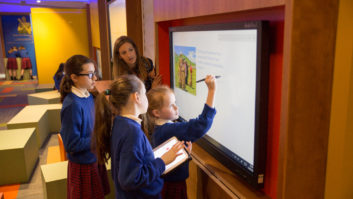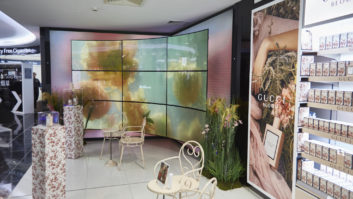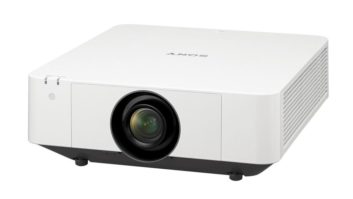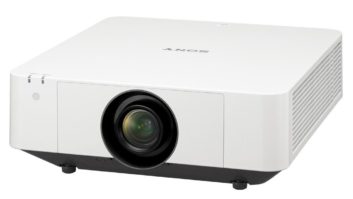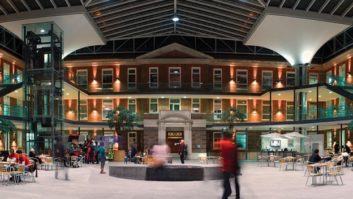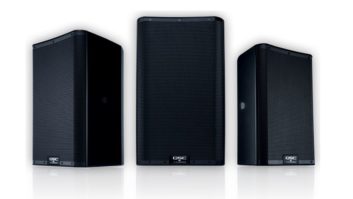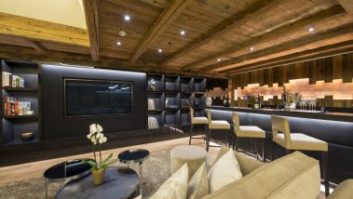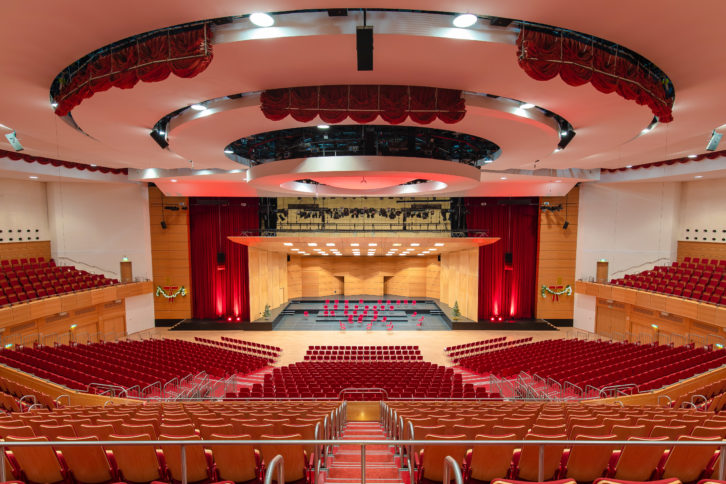
Completed in time for New Year’s Eve, the Great Hall of this congress centre has been fitted with a new active acoustics system with a series of event-specific presets. Tom Bradbury reports
The Congress Centrum Suhl in South Thuringia, Germany was constructed in the mid-1970s and reconstructed in the 1990s. Compared to other multifunctional performing arts halls the Great Hall of the congress centre stands out with a volume of 34,000 cubic metres, 2,352 seats and a stage area of 200sqm.
The Great Hall is used for conferences, cabaret, theatre and a variety of concerts. The reverberation time of the hall is 1.3 seconds, which provides good conditions for speech and TV show productions, but is too dry for chamber music and the more symphonic concerts.
Install goal
The goal was to improve the hearing experience of the visitors and to enhance the very short natural reverberation time for concerts and other events. The focus was on the enhancement of the acoustical envelopment and the volume perception during concerts.
The operators of the Congress Centrum Suhl decided on a regenerative electroacoustical Amadeus Active Acoustics system, because it offers the latest methods for generating multi-channel reverberation and multi-channel reflections. In terms of the other system components, existing equipment had to be used where possible, for example, the 74 ceiling loudspeakers of a formerly installed system.
A general requirement was for all components to feature extreme low-noise and undistorted sound. The microphones and speakers were specified by ADA-AMC Acoustics & Media Consultants, Berlin. The size of the hall meant special care was taken to guarantee a consistent acoustic enhancement throughout the venue. ADA-AMC also had to ensure that single speakers could not be detected and localised.
Acoustic system
Amadeus is a regenerative acoustic system. In these systems, the signals of the stage and the diffusive sound in the auditorium are picked up with nearly invisibly installed microphones and transferred to a processor. The signals are only very slightly processed and redistributed through a large number of wide dispersion speakers in the ceiling and the side walls into the diffuse field of the entire audience area. By reproducing the natural sound of the hall, the reverberant energy is increased. In addition, stage signals are used to increase the number of early reflections and are processed and distributed through speakers on the side walls. This increases the spatial impression and the sound transparency of the room. The additional reverberant energy and early reflections add to the natural acoustics similar to architectural measures like moving panels or reverberant acoustic spaces. In contrast to former systems, the Amadeus system software migrates with future developments.
To pick up the acoustic signals, seven Audio-Technica U853 microphones were distributed above the stage to work with an existing mobile ‘orchestra shell’. Seven more U853 microphones were evenly distributed above the audience. Special care had to be taken to avoid possible interferences of the existing dimmer cables with the microphone cables in the restricted installation space of the roof. After processing in the Amadeus Core, the signals are distributed to the speakers. The speakers are characterised with a clean and natural sound, a wide uniform frequency response as well as wide and even coverage. Measurements of the 74 existing JBL Control 28 speakers in the ceiling showed that they could still be used. For the side walls and the back of the hall, 35 Renkus-Heinz CX61 speakers were added. To achieve a smooth sound, the EQs of all speakers were adjusted via the Amadeus Core DSP. For amplification, the install included 10 Bittner 8X100 multichannel power amplifiers.
The signals are transmitted via a newly installed Dante network, using an Attero Tech Synapse D16Mio interface with integrated microphone pre-amplifiers for D/A conversion and three unD32 breakout boxes for A/D conversion of the loudspeaker signals. All components except for the speakers and microphones are rack-installed in a confined space in the roof above the audience.
Presets
After the installation, the different acoustical parameters of the different venue types were tuned according to special requirements and stored in presets on a password-protected iPad. The presets can be activated by a keystroke before anyone enters the venue for an event. Presets include:
– Theatre: Mean reverberation time of 1.4-1.5 seconds; no increase of the natural reverberation time of the hall, but denser reflection pattern. The room acoustics are optimised for speech intelligibility with the typical envelopment of a theatre hall.
– Chamber Music: Mean reverberation time of about 1.7-1.8 seconds. This preset offers a higher density of reflections. Acoustical envelopment and the perceived loudness are increased, with an emphasis on transparency.
– Symphony Concert: Mean reverberation time of about 2.0-2.2 seconds. This preset offers an appreciably longer reverberation time, higher density of reflections and transparency of soloists or instruments or instrument groups of the orchestra.
– Cathedral: Mean reverberation time longer than three seconds for demonstrations and special effects.
Result and feedback
The time schedule for the project was very ambitious. The actual installation time for the microphones, the central rack and the speakers, as well as the tuning of the system, was three weeks – just before Christmas and with events taking place in the hall almost daily. Old system components had to be dismantled and the new microphones and speakers were installed.
Just in time, the new Amadeus Active Acoustics system was tuned and introduced for the New Year’s Eve concert 2018 of the Prague Festival Orchestra. “The co-operation of all persons in charge was extraordinarily pleasant and professional”, says Thomas Lunacek, integrator and managing director of the Elektroakustik Neuenhagen. “I was really impressed that we got a thank you note after the New Year’s Eve concert from the Congress Centrum.”
Professor Dr. Wolfgang Ahnert, managing director of the ADA-AMC Acoustics & Media Consultants, comments: “We believe, that the new enhancement system will allow high-quality orchestral performances in the Great Hall of the Congress Centrum in the next years, if not decades.”
“The Congress Centrum Suhl is very pleased with the result of the installation of the reverberation enhancement system“, says Diana Schneider, managing director of the Congress Centrum Suhl. “This is reflected by the great number of feedback messages from our visitors, who speak about a special sound experience and perfect musical enjoyment. Special thanks to all persons and companies in charge for the very competent project design and implementation.”
www.ada-amc.eu
www.amadeusaudio.fr
www.atterotech.com
www.audio-technica.com
www.canford.co.uk
eu.dlink.com
www.elektroakustik-neuenhagen.de
www.mediaspro.de
www.renkus-heinz.com
